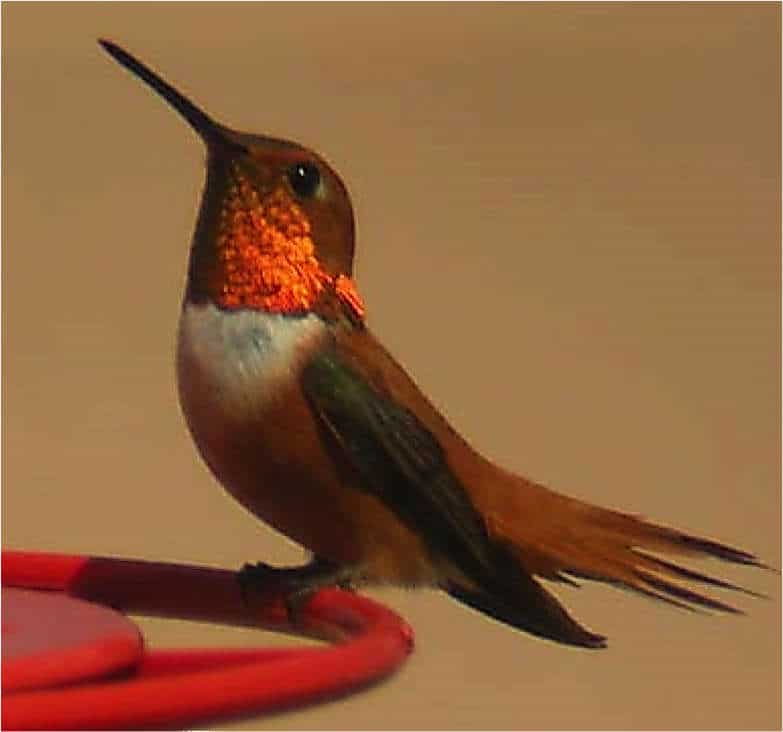 Have you been refilling your hummingbird feeders a LOT in the last few weeks? I have. That is because many hummingbirds are migrating to warmer climates for the winter. One feisty, copper colored dynamo has been taking over my backyard for the last two weeks – the Rufous hummingbird! Rufous hummingbirds may take up residence (at least temporarily) in your garden if you grow hummingbird flowers or put out feeders. But beware! They may make life difficult for any other hummingbird species that visit your yard.
Have you been refilling your hummingbird feeders a LOT in the last few weeks? I have. That is because many hummingbirds are migrating to warmer climates for the winter. One feisty, copper colored dynamo has been taking over my backyard for the last two weeks – the Rufous hummingbird! Rufous hummingbirds may take up residence (at least temporarily) in your garden if you grow hummingbird flowers or put out feeders. But beware! They may make life difficult for any other hummingbird species that visit your yard.
This bird outflies all other species, and usually gets its way at feeders at the expense of slower, less-maneuverable hummers. The Rufous has the longest migration route of all US hummingbirds. Their migration can be as much as 3,000-4,000 miles! The Rufous hummingbird must rapidly gain weight and keep it on, despite extraordinary physical exertion. Weighing in at a little more than a penny, it must double its body weight in order to fuel its migration from breeding grounds in the Pacific Northwest (Alaska to northern California) to wintering grounds in central Mexico.
So how does this hummingbird gain and maintain enough weight to sustain its long migratory flights? During the day, the hummingbird spends much of its time perched, standing guard over its favorite patch of flowers where it gets its boosts of energy-rich nectar. Hummingbirds fly as little as possible, mostly to feed and to chase off intruders. Their wings beat an amazing 62 times per second!!
 Rufous hummingbirds seem to know just how many flowers they’ll need to forage from in order to get enough food. They have excellent memories and often take the same route year after year, stopping at the same flowers and feeders along the way. This memory serves them well on their migration journey, as it is imperative that they find food sources throughout the day, and shelter at night.
Rufous hummingbirds seem to know just how many flowers they’ll need to forage from in order to get enough food. They have excellent memories and often take the same route year after year, stopping at the same flowers and feeders along the way. This memory serves them well on their migration journey, as it is imperative that they find food sources throughout the day, and shelter at night.
If you have placed hummingbird feeders in your yard in years past, try to be consistent with putting them out in the same location. Once you have a Rufous visitor, you will likely have him or her for years to come!
So keep your eyes open for a speeding reddish-brown hummingbird chasing away all of your other hummers – it will be the visiting Rufous getting as much nutrition as it can to sustain it in its long migration!


